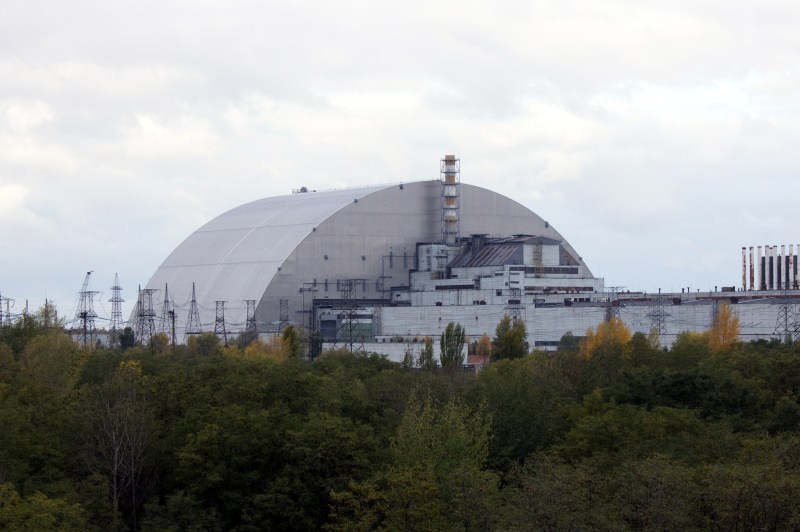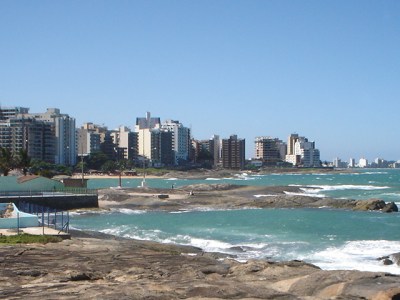
When the Chernobyl nuclear plant suffered the power output surge that would destroy its #4 reactor, a substance called ‘corium‘ was formed. This originally lava-like substance formed out of the destroyed fuel rods along with surrounding materials, like concrete, that made up the reactor. The corium ultimately cooled down and left large amounts of solid corium in the rooms where it had pooled.
Over the past few days there have been numerous reports in the media regarding a ‘sudden surge’ in neutron flux levels from this corium, with some predicting a ‘second Chernobyl disaster’. Obviously, this has quite a few people alarmed, but how dire are these neutron output changes exactly, and what do they tell us about the condition of the corium inside the ruins of the #4 reactor building?
Matter of Perspective
When it comes to translating scientific measurements and data into health and safety information, perspective is everything. For example, after the 2011 Fukushima Daiichi disaster, marine life near the wrecked plant got exposed to increased levels of radioactive cesium isotopes. Some of these, like tuna, are migratory, and are caught by fishers off the US West Coast. As explained by NOAA Fisheries, the fact that we can measure these increased levels in the caught tuna does not mean that they’re of concern to public health, but it’s still not cool.
When it comes to consuming fish, the bigger danger is heavy metals. In the case of tuna, mercury levels are generally high enough that the mercury exposure from a single 85 gram serving of tuna may surpass the (US EPA) safe levels for mercury consumption in an entire week. We have previously covered the dangers of methyl mercury in fish and its role in Minamata disease.

Back to Chernobyl. How much have emissions increased, and is that a lot? 1 milliSievert (mSv) annually is a standard maximum dose for the public. While it’s obviously a good idea to have a conservative maximum dose, there are places where naturally occurring radiation exposes the public to a lot more.
The famous black beaches of Brazil expose tourists and inhabitants to significantly higher levels than this 1 mSv due to the presence of monazite, a phosphate mineral that contains thorium and some uranium. Monazite is found in India, South Africa and other regions as well. Despite these massive violations of what is perceived as the safe limit, studies are not finding significant harm from these high background radiation levels.
Back to Corium
The corium at Chernobyl-4 is not a homogeneous mass, but displays distinct phases depending on when different materials were added. In sub-reactor room 305/2 where the corium first pooled, it is mostly presumably the black ceramics type. All of the corium consists out of a silicate glass matrix with the other substances mixed into it. Constituents are the (non-enriched) uranium oxide fuel, the zirconium from the fuel rod cladding and serpentinite.
Serpentinite was used inside the RBMK reactor as radiation shielding at the top of the reactor, due to its ability to slow down neutrons through elastic collisions — the neutrons literally bounce off without changing the serpentinite. In the corium samples analyzed, the main constituent was silicon dioxide (SiO2), commonly known as glass. With the amount of SiO2 in the corium samples ranging from 60-70%, the long-term stability of corium hinges on the stability of this glass matrix under constant irradiation.
As the radioactive isotopes in the corium, mostly transuranics and actinides, undergo radioactive decay, the short-lived isotopes are responsible for most of the radiation. The high-energy, but low penetration, alpha decay particles can cause so-called Coulomb explosions, which could conceivably damage the crystalline SiO2 matrix to the point of collapse. Estimates are that the self-irradiation levels of the Chernobyl-4 corium are not sufficiently high to warrant such a transformation over a 100 year timespan.
Rainwater
A recent significant change at the Chernobyl-4 reactor has been the placement of the New Safe Confinement (NSC) structure over the ruins. This replaces the original 1980s improvised concrete sarcophagus which was originally erected around the reactor remains by the Soviet government. This old sarcophagus was anything but airtight, allowing rainwater and even small animals to enter the structure.
With the NSC in place, however, this steady supply of rainwater has now stopped, which presumably would have begun to dry out the reactor remains and the sub-subterranean rooms. As a highly effective neutron moderator and absorber, this rainwater is speculated to have reduced the reactivity of the corium. With the water content decreasing, the initial effect would be that of a void formation that decreases neutron capture, and thus increases reactivity of the fissile material.
With less water, the neutron flux has accordingly increased. However, it should also be noted that this is not a new or sudden phenomenon. The neutron flux has been gradually increasing over the past four years, with a doubling during that time in room 305/2. It and the other changes since the installation of the NSC having been a subject of constant study by the Institute of Nuclear Power Plant Safety (IPBAE) of the Ukraine Academy of Sciences.
According to the IPBAE, there are many uncertainties about what may happen next, but that so far the neutron flux has not exceeded established safety limits. With the neutron flux density still gradually increasing, the situation warrants caution, but not alarm. Their models show that the worst case situation would cause a sudden spike in thermal output due to a run-away fissile reaction with the boiling off of any remaining water in the material contained in room 305/2.
The resulting steam explosion might weaken the reactor’s ruins and the degrading sarcophagus further, but the NSC is expected to contain the radioactive dust in this scenario. Definitely a bad day for NSC operators, but unlikely to affect the area outside this containment.
Tempest in a Corium Teapot?
Considering that this is a slowly developing situation that has been constantly monitored ever since the NSC was rolled into place above Chernobyl-4’s ruins, and with even the worst-case scenario likely to remain within the confines of the NSC, it seems somewhat odd that it would get this much media attention. Especially considering that the current neutron flux density is in science lingo merely ’cause for concern’, meaning a situation that still far removed from any situation that would require immediate action.
The goal at this point is for scientists to work on further monitoring and modelling the interactions that are happening in room 305/2 and other parts of Chernobyl-4’s ruins. With Chernobyl-4’s corium being essentially unique in its severity and scope, much of this is still a learning experience. Yet it should not be a concern to the average citizen.
For example radioactive radon gas is the number one cause of lung cancer in non-smokers in the US, responsible for 21,000 lung cancer deaths each year. The reasonable approach for people who don’t work at or near the Chernobyl-4 NSC would be to pay attention to the radon gas levels in their house and mind the amount of tuna they eat.
In addition, as covered in our earlier article on the Chernobyl nuclear plant disaster, the leading cause behind the disaster was a complete lack of safety culture. This pervaded not only the design of this RBMK-style reactor, but also the way it was operated and maintained. In current day Ukraine, and under the watchful eye of the IAEA, safety culture is no longer optional at the now shuttered Chernobyl nuclear plant.
None of this is to say that accidents cannot happen, but it is important in life to keep the appropriate perspective.
0 Commentaires